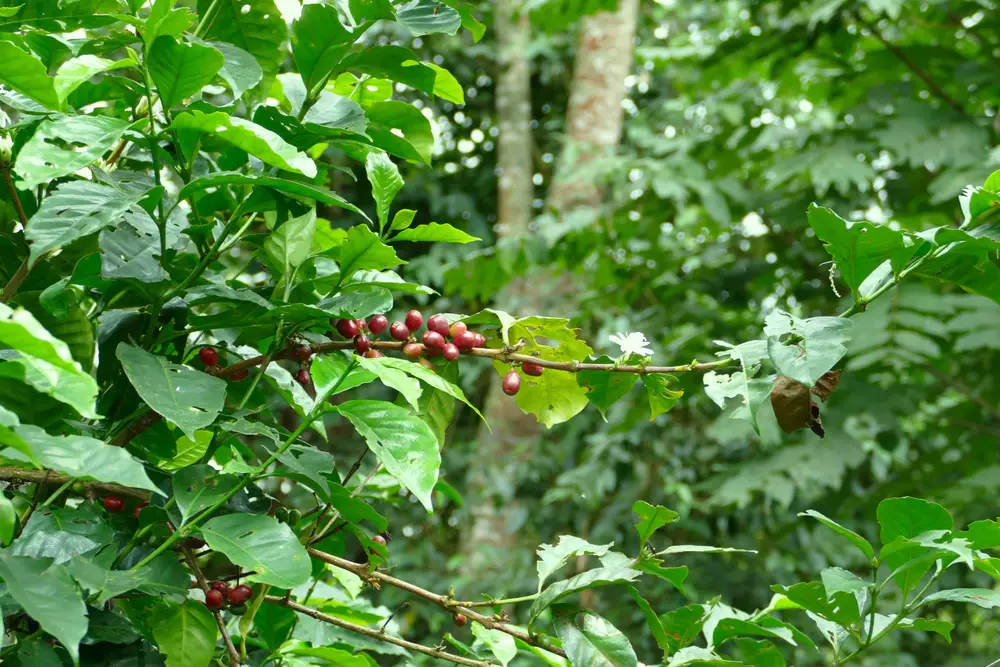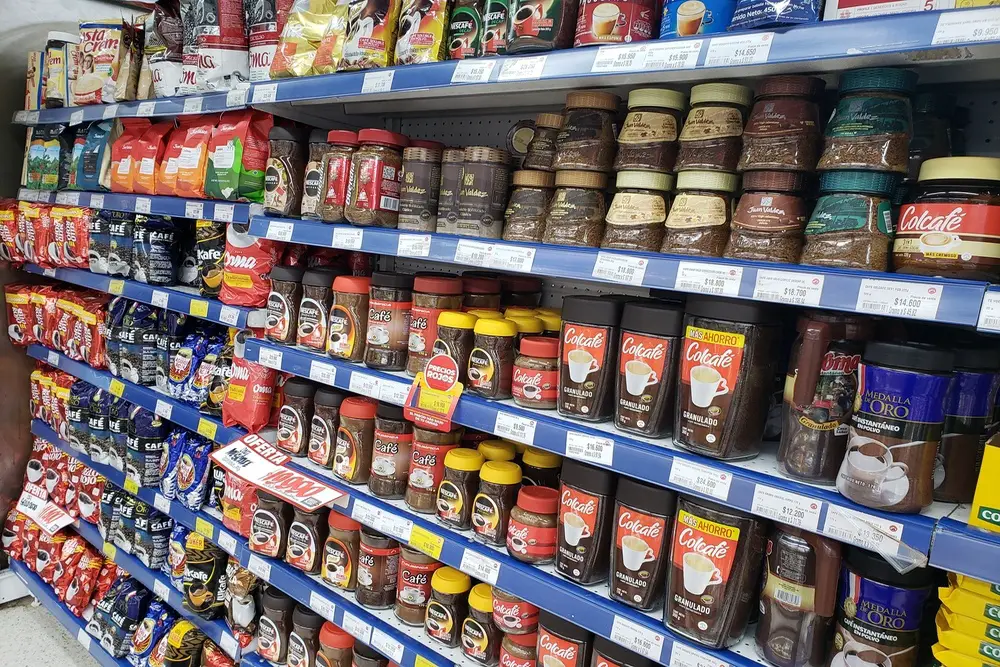Table of Contents
Deforestation caused by coffee cultivation
Coffee cultivation requires special climatic conditions. However, these climatic conditions will change. It is possible that droughts, rainfall and dry seasons will increase or change.
The negative effects of the increasing expansion of coffee cultivation are a fact, because with it comes deforestation.
Over the years, especially over the last century, 80% of deforestation has been reported to be due to intensive farming, which includes coffee growing.
Millions of acres of forest are cleared every year, according to data from the University of Maryland’s Global Forest Watch. In 2020 alone, around 12.2 million hectares of tropical forest were destroyed.
The following countries are among the frontrunners in forest loss:
- Brazil: 1.7 million hectares
- Democratic Republic of the Congo: 490,000 hectares
- Bolivia: 276,000 hectares
- Indonesia: 270,000 hectares
- Peru: 190,000 hectares
- Colombia: 166,000 hectares
- Cameroon: 100,000 hectares
- Laos: 82,000 hectares
- Malaysia: 73,000 hectares
- Mexico: 68,000 hectares
Coffee contamination in the water
Most coffee processes use large amounts of water. These cause a much higher level of pollution than urban household wastewater.
The by-products of coffee have various chemical effects such as: B. Changes in pH, low oxygen concentration, the presence of organic matter in the water, changes in the appearance of water in terms of color and smell, temperature rise and effects on fauna, leading to the death of fish and other animals due to poisoning to lead.
According to the Specialty Coffee Association, water usage can vary depending on the processes used. However, it is important to clarify that coffee farmers typically do not have the resources to improve their practices and water use efficiency. Up to 75 liters of water per kilo of coffee cherries can be used in traditional processes, which is related to transport, pulping, fermentation and washing.
The carbon footprint of a cup of coffee
An individual’s carbon footprint is 4 tons per year, based on factors such as travel, household energy use, and food and drink. These foods also include coffee, which accounts for part of the carbon footprint.
is brewed in a pot, it is grown, harvested, processed, transported, roasted, and ground. This naturally releases CO 2 into the atmosphere. However, we must also consider other foods or inputs that go along with the preparation of coffee, such as milk, sugar and cream, which have a larger carbon footprint.
For example, according to a study by University College London, an average cup of espresso has a carbon footprint of 0.28. The coffees that contain milk, e.g. B. milk coffee or cappuccino, are between 0.41 and 0.55 kg.
According to some estimates, the largest contribution to the carbon footprint is generated in the final phase, i.e. consumption, which accounts for a third of total emissions.
We think in particular of cafes and the serving of their drinks, as they emit CO2 from espresso machines, lighting, heating, air conditioning, dishwashers, coffee roasters, etc. This can double or even triple the overall carbon footprint.
Another factor that affects the carbon footprint is the transportation, roasting and packaging of coffee products. In the case of coffee roasters, fuel consumption accounts for 79% of their carbon footprint. It would thus contribute 6% to the total footprint it causes.
Waste caused by coffee consumption
Disposable cup
According to a report by the Environmental Audit Committee (EAC), 2.5 billion coffee cups are used and thrown away each year in the UK alone, of which only 0.25% are recycled, ie 1 in 400. This is alarming because it is about Waste of material for the sake of coffee enjoyment.
According to Perfect Daily Grind, coffee consumption and the use of disposable cups is a serious problem because paper cups have a polyethylene coating on the inside that makes them impermeable and difficult to separate, making them difficult to reuse.
Disposable capsules
The problem with using coffee capsules is that the materials they are made from are not biodegradable, each capsule requires an aluminum and plastic shell that is not usually recycled. Most capsules are not disposed of properly. There is also a huge amount of packaging material.
Capsule sales have grown 26% over the past decade, outpacing many other coffee brews. A study by Kantar Worldpanel claims that the use of single-use capsules will outperform all other preparation methods in the future.
According to Halo, a manufacturer of biodegradable packaging, it is estimated that more than 13,000 capsules containing aluminum and plastic are thrown away every minute. That means there are more than 7 billion capsules annually that take about a century to break down naturally.
Coffee filter
The use of paper coffee filters, which are typically used only once and then thrown away, is significant. The use of reusable filters is an alternative here.
The best options are those made of fabric or metal.
Environmental Impacts of Coffee in Colombia
An article of Wildlife Conservation Society entitled “Coffee, Environmental Sustainability, Climate Change and Competitiveness ” (Coffee, Environmental Sustainability, Climate Change and Competitiveness) provides information on the environmental impact of coffee in Colombia.
According to the United Nations, Colombia is the third most vulnerable country in terms of climate change. This also threatens coffee cultivation.
In areas where deforestation is normally associated with cultivation, it was analyzed that 74% of the 2011 landslides (399 events) were less than 500 meters from sites deforested in the period 1990-2010.
Roman Grüter, researcher at the Zurich University of Applied Sciences, combines climate change forecasts and soil factors to model the different regions of the world for coffee cultivation. The 14 climate models show that a decline in coffee production is to be expected in the most important coffee-growing regions such as Brazil, Vietnam, Indonesia and Colombia.
In the cultivation and industrialization of coffee, only 5% of the weight of the dried coffee fruit is used to prepare the drink, the remaining 95% is waste.
Climate change and its impact on coffee cultivation
Estimates suggest that by 2050, global temperature and its rise could impact arable land, with increased rainfall, dry spells and increasing droughts. If cultivation methods and consumption habits do not change, the area under coffee will decrease by 50% by then.
Coffee consumption has increased worldwide due to changing habits and the development of emerging countries. As a result of this and the growing demand, the area available for coffee cultivation is likely to almost triple. This amplifies the effects that are already there.
Sustainable coffee cultivation
However, it is important to clarify that this is not an informative point of view, but that it is possible to lessen or reduce waste in order to develop more sustainable habits.



